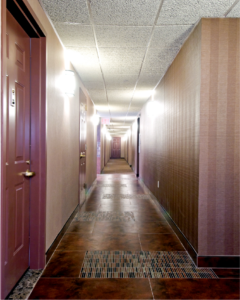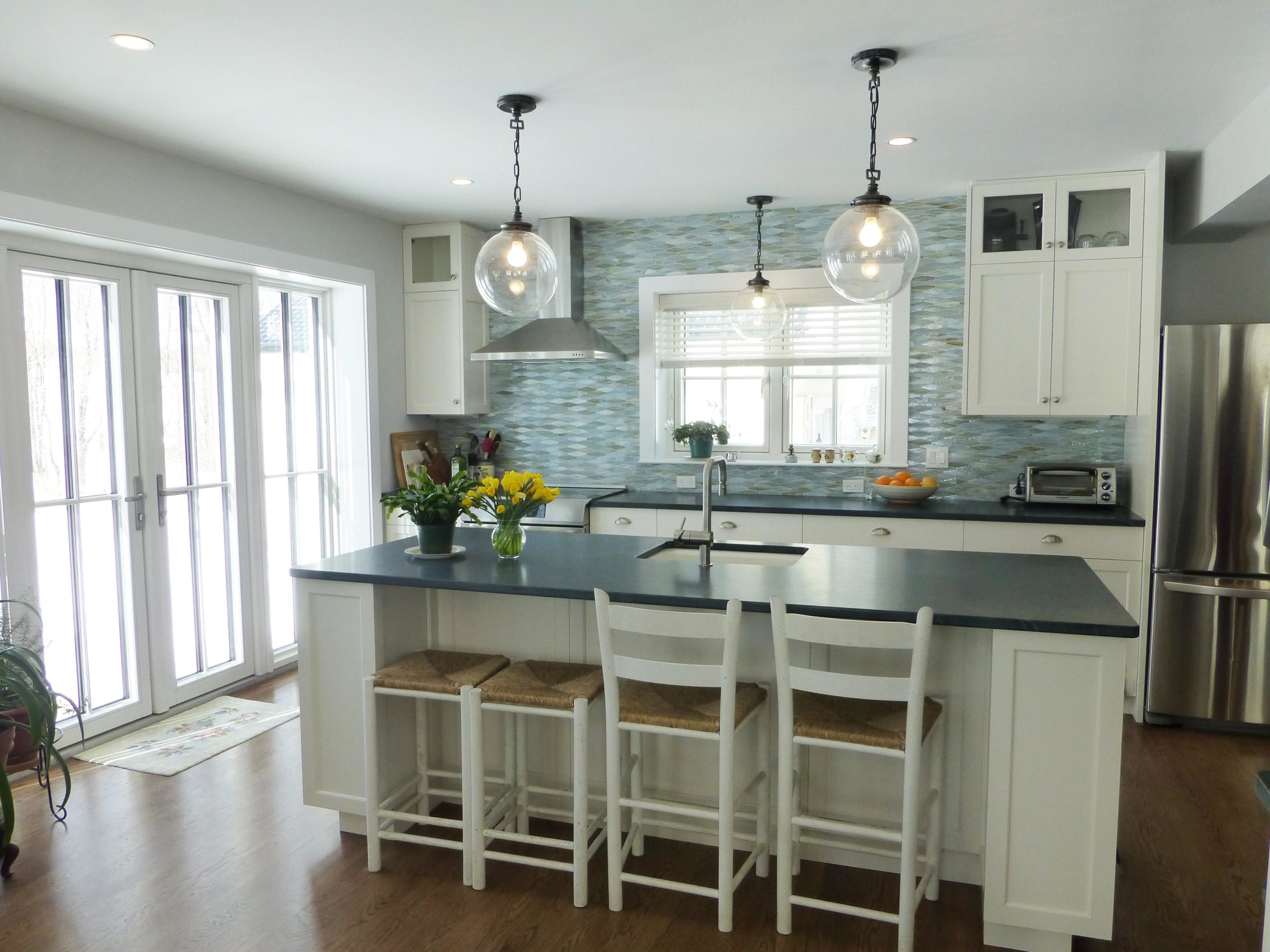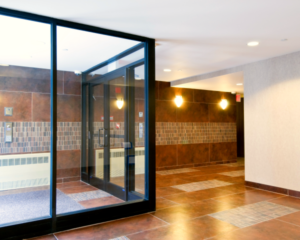- October 05, 2018
- 0 Comments
- In Certifications & Programs High-Performance Construction
- By Steven Winter Associates
Walking the aisle of your favorite home improvement store, you’ll notice the wide array of options for very efficient light fixtures. Don’t be fooled – truly efficient lighting design is achieved through thoughtful layout and proper controls.
 A high performance building warrants an efficient lighting strategy. With so many efficient LED fixtures available on the market, individual fixture efficiency is rarely an issue. However, these fixtures are often placed in high concentrations or at a higher wattage than necessary to adequately illuminate a space. The result is high lighting power density (LPD), which is measured by dividing the total light fixture wattage in a room by the square footage of that room. Even with controls such as occupancy or vacancy sensors, high LPDs are especially energy intensive in frequently occupied common areas, e.g., corridors and lobbies of multifamily buildings, impacting the bottom line efficiency of all buildings.
A high performance building warrants an efficient lighting strategy. With so many efficient LED fixtures available on the market, individual fixture efficiency is rarely an issue. However, these fixtures are often placed in high concentrations or at a higher wattage than necessary to adequately illuminate a space. The result is high lighting power density (LPD), which is measured by dividing the total light fixture wattage in a room by the square footage of that room. Even with controls such as occupancy or vacancy sensors, high LPDs are especially energy intensive in frequently occupied common areas, e.g., corridors and lobbies of multifamily buildings, impacting the bottom line efficiency of all buildings.
Projects pursuing Passive House certification are impacted by an optimized lighting scheme more so than a code-built building. As the heating and cooling energy used in a Passive House building decreases due to an excellent thermal envelope, the ratio of lighting energy used increases. Reducing lighting energy use can drastically improve the building’s overall primary energy demand.
 Let’s look at several ways to reduce lighting energy consumption in the common areas and back-of-house portions of multifamily buildings. Keep in mind these lessons apply to other building types and portions of the building as well. We generally use default values when modeling in-unit lighting, as the tenant behavior greatly influences the actual energy use.
Let’s look at several ways to reduce lighting energy consumption in the common areas and back-of-house portions of multifamily buildings. Keep in mind these lessons apply to other building types and portions of the building as well. We generally use default values when modeling in-unit lighting, as the tenant behavior greatly influences the actual energy use.
Are all fixtures high efficacy? This means:
- 60+ lumens/Watt for lamps over 40 Watts
- 50+ lumens/Watt for lamps over 15 Watts to 40 Watts
- 40+ lumens/Watt for lamps 15 Watts or less
Can lighting design in frequently occupied spaces be improved?
For example, reduce fixture quantity and/or wattage, or increase efficacy. Examples of frequently occupied spaces are stairs, corridors, residential lobbies, and community, computer, conference, meeting, multipurpose, exercise, lounge, and recreation rooms.
Can any design adjustments provide both adequate lighting and energy savings?
- Eliminate or reduce wattage, especially for wall sconces, wall art lighting, or chandelier fixtures
- Reduce fixture quantity in frequently occupied spaces
- Reduce fixture quantity & increase wattage (e. g., 10x 13W fixtures to 5x 20W fixtures)
- Increase fixture quantity & reduce wattage (e.g., 10x 36W fixtures to 15x 20W fixtures)
- Reduce quantity of bulbs in fixtures (e. g., 3x 13W lamps to 2x 13W lamps)
- Select higher efficacy fixtures
Can a reduction in fixture quantity provide adequate illumination for that space?
There are two true benefits to improved lighting design. With fewer fixtures installed, there is potential for upfront cost savings. A building owner’s electric bills will be lower than an over lit design.
By Joanna Grab, Senior Sustainability Consultant


